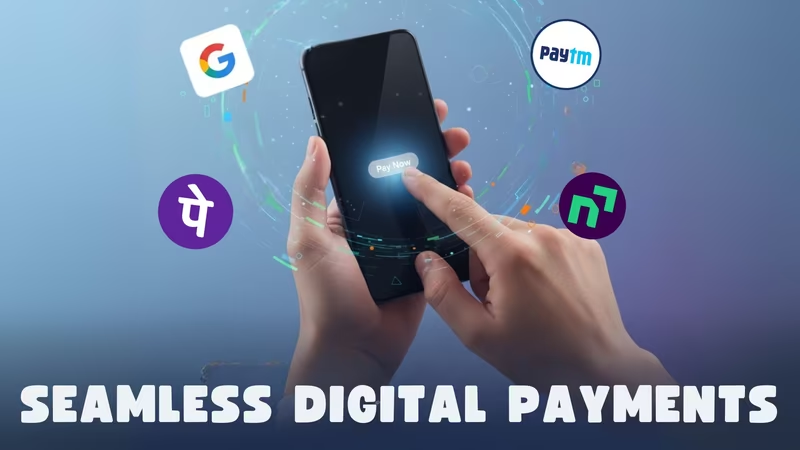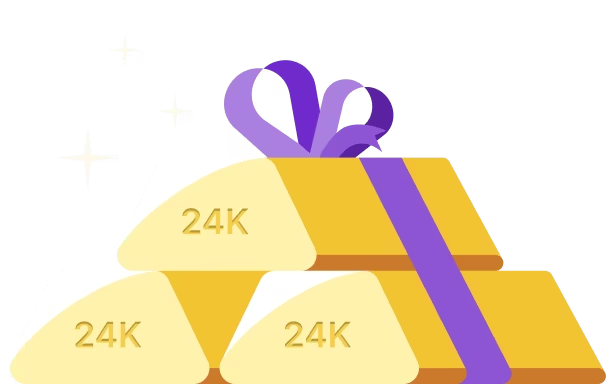The digital revolution in India runs on UPI. With over 500 million active users and processing over 20 billion transactions in August 2025 alone, the Unified Payments Interface (UPI) is far more than just a payment system. It’s the backbone of the nation's financial life.
But which app should you choose?
The market is dominated by a few giants, each with unique features, user experiences, and financial offerings.
This definitive guide breaks down everything you need to know, from the core mechanics to the top players in the game today.
What is UPI?
UPI, or the Unified Payments Interface, is an instant payment system and protocol developed by the National Payments Corporation of India (NPCI) and launched in 2016.
Think of UPI as the superhighway connecting all your bank accounts, allowing you to transfer money in real-time, 24/7, 365 days a year.
Key Facts About UPI:
- Real-Time Transfer: It enables immediate fund transfers between two bank accounts.
- Virtual ID: Transactions use a unique UPI ID or VPA (Virtual Payment Address) linked to your bank account, meaning you don't need to share sensitive details like account numbers or IFSC codes.
- Massive Scale: UPI accounts for an overwhelming 84% of all digital payments in India.
- Regulation: The entire system is strictly regulated by the Reserve Bank of India (RBI).
UPI vs. BHIM vs. RuPay: What's the Difference?
These three terms are often used interchangeably, but they serve entirely different roles in the digital payment ecosystem:
| Feature | Unified Payments Interface (UPI) | BHIM (Bharat Interface for Money) | RuPay |
| Nature | The underlying protocol or technology. | A dedicated mobile application built on the UPI platform. | An indigenous card network (like Visa or Mastercard). |
| Developer | National Payments Corporation of India (NPCI). | National Payments Corporation of India (NPCI). | National Payments Corporation of India (NPCI). |
| Purpose | To provide instant, interoperable communication between banks. | To offer a simple, dedicated, and government-backed platform for P2P transactions. | To facilitate card-based payments and link credit cards to UPI. |
| Relationship | UPI is the framework that BHIM runs on. RuPay Credit Cards can be linked to your UPI ID to make merchant payments. | ||
Worried about extra charges? Find out how GST impacts your UPI payments in our guide on GST on UPI Payments in 2025.
Types and Evolution of UPI (More Than Just Transfers)
The UPI platform is constantly evolving, introducing specific features to handle different transaction scenarios:
| UPI Feature/Type | Purpose and Functionality | Key Benefit |
| P2P & P2M | Peer-to-Peer (P2P): Sending money to friends/family. Peer-to-Merchant (P2M): Paying shops, restaurants, or online services (63% of total UPI volume). | Covers all daily financial needs. |
| UPI LITE | Designed for low-value transactions (below ₹1,000). It allows PIN-less payments via an on-device wallet, improving transaction success rates. | Faster, PIN-less experience for small purchases. |
| UPI 123PAY | Launched for users with feature phones (non-smartphones) or those with limited/no internet access. Transactions happen via IVR (Interactive Voice Response) or Missed Call. | Financial inclusion for users without high-speed internet or smartphones. |
| Credit Line on UPI | Allows banks to sanction a pre-approved credit line that can be linked to your UPI ID and used immediately for merchant payments. | Instant access to formal credit at the point of sale. |
| Biometric Authentication | A forthcoming feature allowing users to authorise payments using their smartphone's fingerprint or face unlock instead of a UPI PIN. | Enhanced security and speed for transaction authentication. |
But wait! Have you heard of Jar UPI?
It’s where your UPI payments start growing instead of just going!
Your spare change gets auto-invested in digital gold. No effort, just smart saving.
Download Jar now and turn your daily payments into daily savings!
The Top 10 UPI Apps in India
The Indian UPI market is highly concentrated, with PhonePe, Google Pay, and Paytm consistently dominating over 95% of the total transaction volume and value.
The table below lists the top UPI apps by recent transaction volume data from the NPCI, providing essential details for each.
| Rank (By Volume) | App Name | UPI Service Launch Year | Registered Users (Approx.) | Aug '25 Monthly Transactions (Million) | Play Store Rating/Reviews |
| 1 | PhonePe | 2016 (August) | 600 Million+ | 9,600 | 4.5 star / 13.1M |
| 2 | Google Pay (GPay) | 2017 (September) | 67 Million+ (Active) | 7,400 | 4.0 star / 11M |
| 3 | Paytm | 2016 (Integrated Early) | 500 Million+ | 1,600 | 4.7 star / 22.5M |
| 4 | Navi | N/A (Fintech) | 100 Million+ (Downloads) | 406 | 4.5 star / 3.07M reviews |
| 5 | CRED | 2023 (April) | 13 Million+ (MAU, 2024) | 219 | 4.8 star / 2.79M reviews |
| 6 | Super.money | N/A (Flipkart-backed) | 10 Million+ (Downloads) | 203 (Feb '25) | 4.2 star / 1.56M reviews |
| 7 | BHIM | 2016 (December) | 100 Million+ | 100 (Aug '25) | 4.1 star / 1.71M reviews |
| 8 | Amazon Pay | 2019 (January) | 100 Million+ (Users) | 98 (Aug '25) | N/A (See Explanation) |
| 9 | Axis Bank Apps | N/A (Bank) | N/A (See Explanation) | 117.70 (Feb '25) | 4.6 star / 3.24M reviews (Main App) |
| 10 | FamApp by Trio | N/A (Fintech) | N/A (See Explanation) | 77.08 (Feb '25) | 4.5 star / 93.8K ratings (iOS) |
Why is Data Inconsistent for Fringe Players?
The primary reason for the data gaps in the table for players ranked 4 through 10 is the structure of public reporting within the UPI ecosystem:
- Non-Mandatory Daily Reporting: NPCI only publishes aggregate UPI data. While dominant players (PhonePe, Google Pay, Paytm) have rigorous daily reporting due to market share and regulatory scrutiny, smaller Third-Party Application Providers (TPAPs) do not consistently track or publicly release detailed daily transaction or user behavior data.
- Integrated Service Models:
- Amazon Pay: Its UPI is integrated into the main Amazon app, so Play Store ratings and review counts are aggregated, making UPI-specific ratings unavailable (N/A).
- Axis Bank Apps: Axis Bank offers UPI via "Axis Mobile" and "BHIM Axis Pay." Transaction volumes are often aggregated across these, making a single user count or app review count misleading (N/A).
- Niche Focus and Data Discretion (Navi, CRED, FamApp): These Fintech startups (e.g., CRED for high-value users, Navi for loans) often choose not to disclose specific registered user numbers or daily transaction averages, reporting raw monthly volume only when required for regulatory or investment purposes (N/A for daily calculations).
Travel often? Check out 12 Countries That Accept UPI Payments and go global with your favorite UPI app!
What is UPI AutoPay?
UPI AutoPay is a convenience feature that allows you to automate recurring payments directly from your bank account. This system uses a UPI mandate where you authorize automatic debits for repeated charges, removing the need for manual intervention every time.
This feature is perfect for:
- Subscription services (OTT platforms, magazines)
- Utility and Mobile Bills (Electricity, Mobile, DTH)
- Loan EMIs and Insurance Premiums
- Mutual Fund SIPs (Systematic Investment Plans)
The system allows you to set up customised payment options, including monthly or quarterly cycles, for amounts above ₹1.
Best AutoPay UPI App for AutoPay
Since UPI AutoPay is a feature of the underlying NPCI protocol, all major third-party apps (BHIM, PhonePe, Google Pay, and Paytm) support it. The "best" app for AutoPay largely depends on specific features like
- UPI Lite Auto Top-Up: Apps like Paytm support the UPI Lite feature, which allows you to set an auto top-up mandate. This automatically replenishes your UPI Lite balance (for small, PIN-less transactions) when it drops below a threshold you define, ensuring you never run out of funds for micro-payments.
- Convenience and Interface: All major TPAs offer the ability to modify, pause, or revoke mandates directly through the app.
However, users should be aware of regulatory changes. As of August 2025, UPI AutoPay mandates for certain transactions are processed only during specific time slots (like before 10:00 AM, between 1:00 PM to 5:00 PM, or after 9:30 PM) to avoid server congestion during peak hours.
Want your phone to earn for you? Don’t miss our Best Money Earning Apps in India (2025). real, honest, and rewarding.
The Undeniable Benefits of UPI Apps
Beyond simple transfers, the proliferation of UPI offers massive advantages for both users and the economy:
- 24/7 Availability: Instant money transfer capability, regardless of banking hours.
- Simplified Access: You can access and transact from multiple bank accounts using a single mobile application and a single PIN.
- High Security: UPI uses a secure, two-factor authentication process (your device/app and your UPI PIN). It adheres to strict security standards mandated by the RBI and NPCI.
- Convenience: It offers a seamless alternative to cash or card payments via virtual IDs and QR codes.
- Financial Inclusion: Features like UPI 123PAY bring digital payments to remote areas and feature phone users, deepening financial penetration across the country.
UPI has definitively won the payment war in India, dominating digital transactions and setting global records. While the market leaders deliver speed and reliability, the best app for you is the one that transforms your financial routine.
The next stage of the UPI revolution isn't just about how fast you pay; it's about how effectively you save. Look for applications that seamlessly integrate wealth creation into spending, whether through digital gold or access to credit.
FAQs
1. Which is the No. 1 UPI app in India?
PhonePe is the No. 1 UPI app in India, holding the largest share of UPI transactions with millions of active users every month.
2. Is PayZapp better than PhonePe?
Not really. PhonePe offers wider acceptance, better rewards, and more features, while PayZapp mainly benefits HDFC Bank users.
3. Is BHIM better than Google Pay?
BHIM is simple, secure, and ad-free, but Google Pay offers a smoother interface, cashback, and wider merchant support.
4. Is UPI 100% safe?
UPI is very safe, but not 100%. Always keep your app updated, never share your UPI PIN, and avoid unknown payment links or QR codes.










